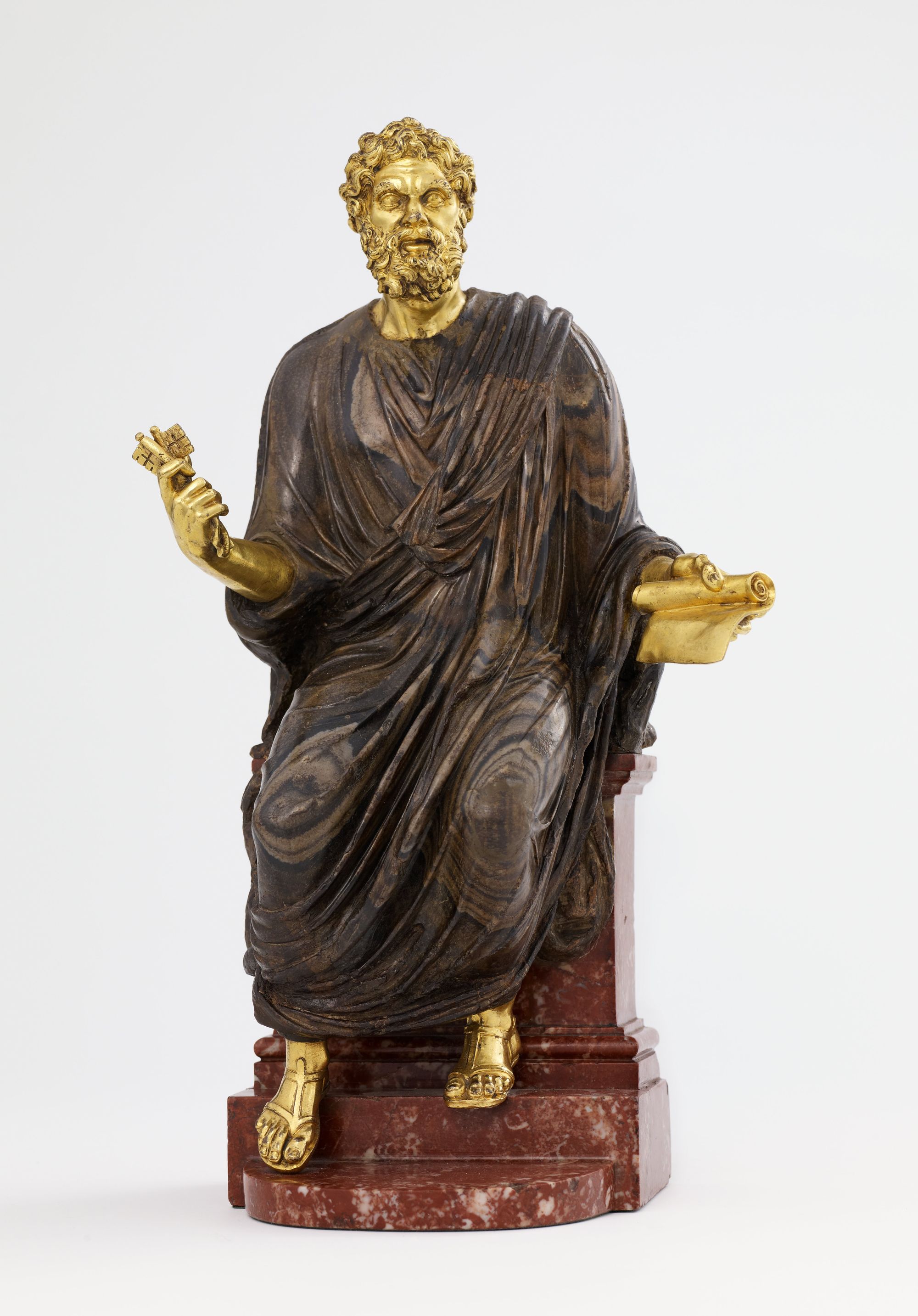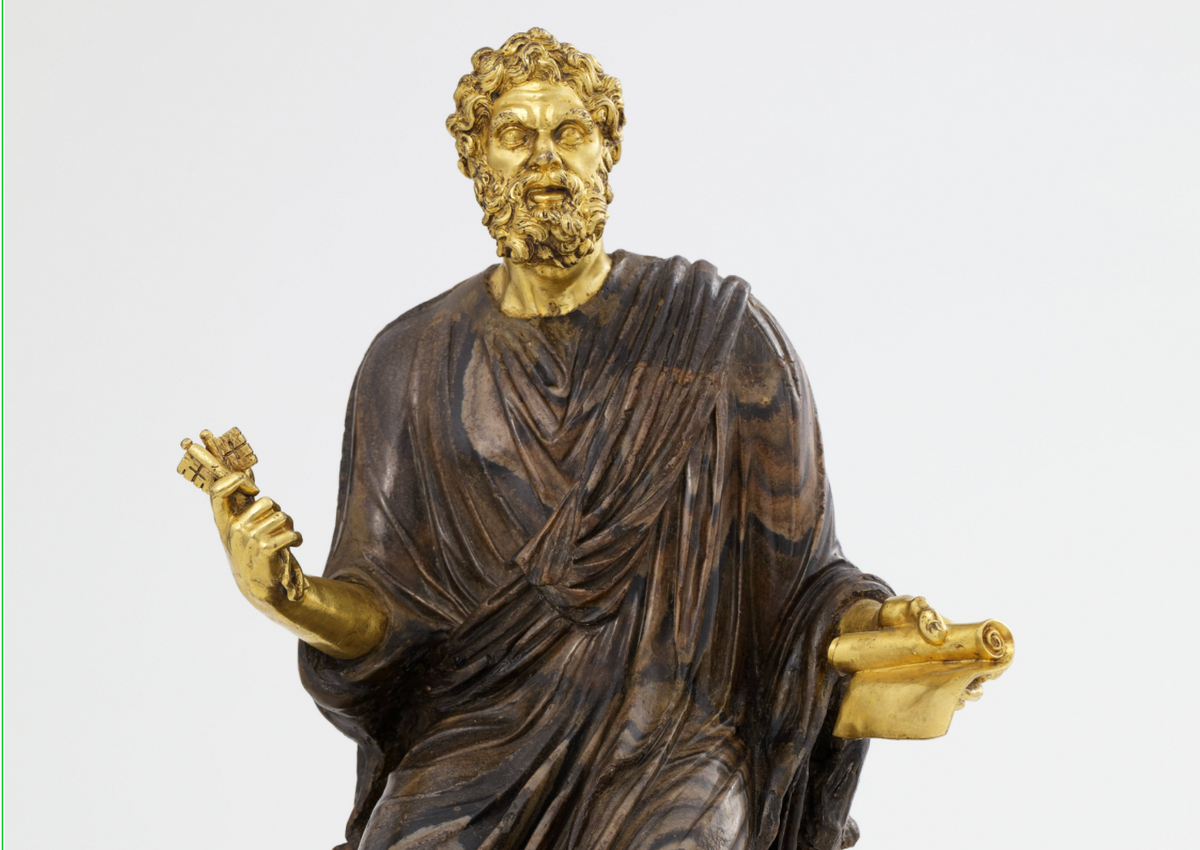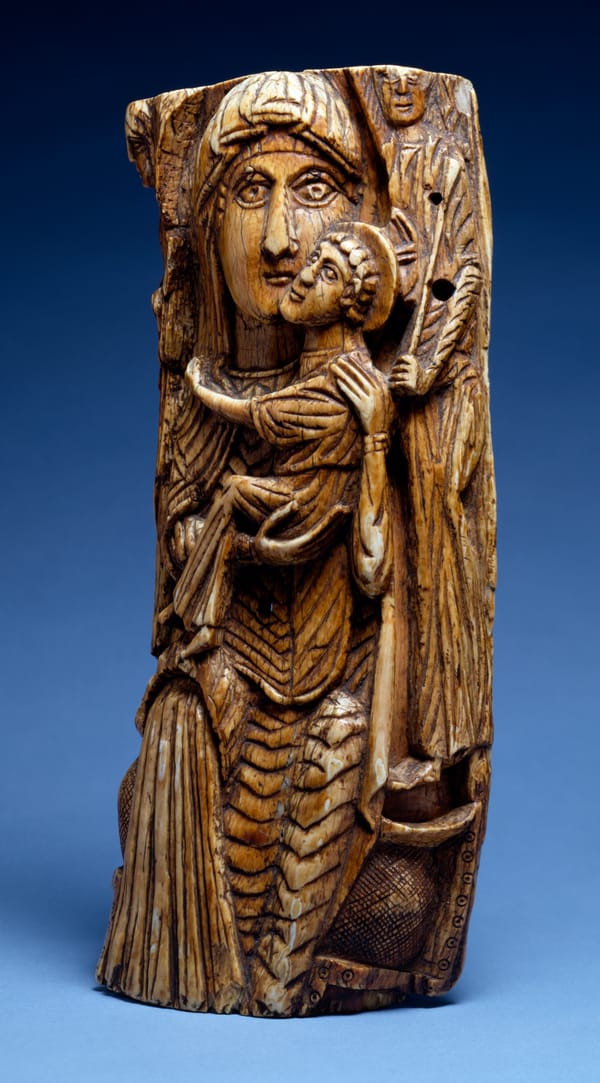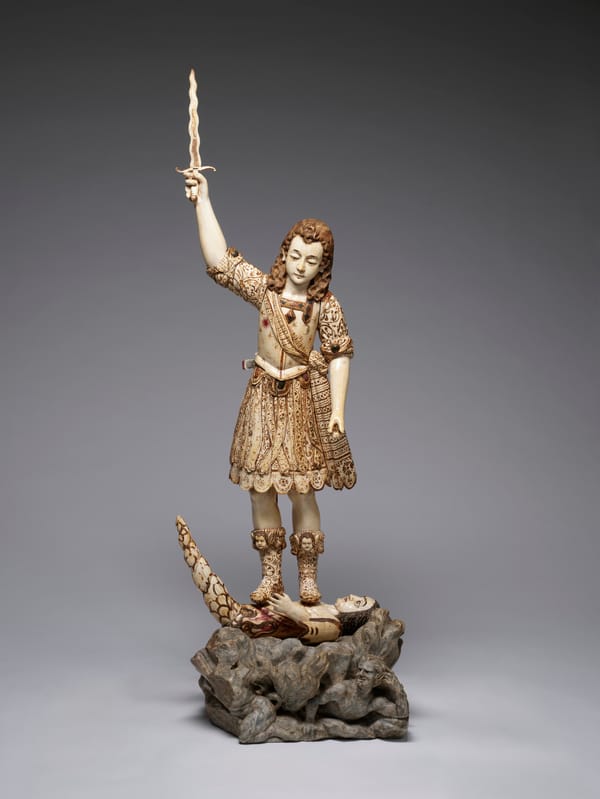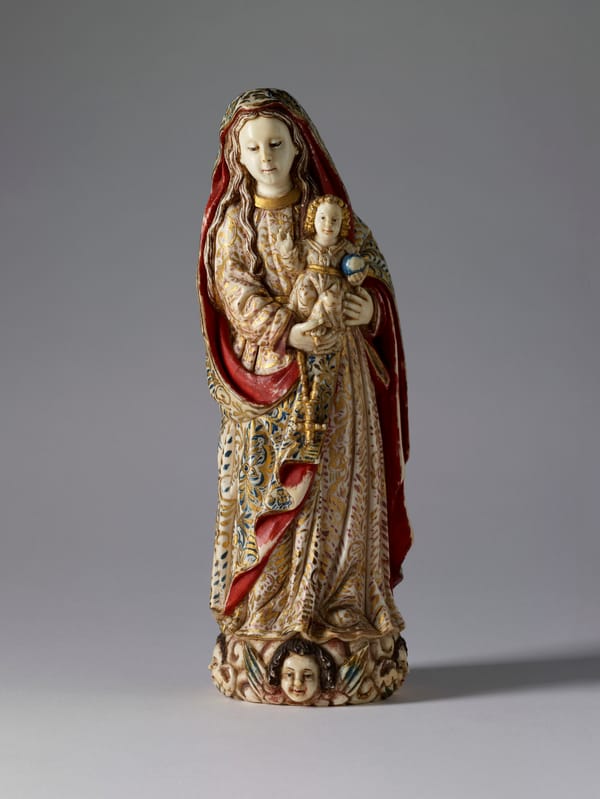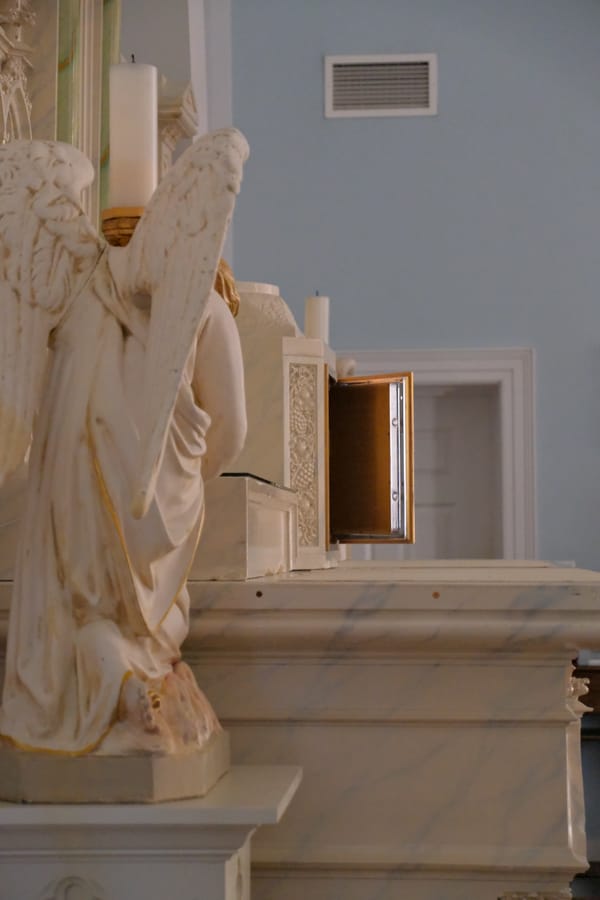This sculpture originally represented a philosopher or a god, and was transformed into St. Peter in the late 16th century by adding the expressive head, hands, and feet in gilt bronze, and a throne. An unknown Roman sculptor carved it out of rare Greek cipollino ("onion-like") marble, using the layers of different colors to emphasize the forms and movement of the body. This prized masterpiece was part of the Ludovisi collection in Rome, where it had been displayed in the same room as Bernini's Pluto and Proserpina since 1623.
Free Downloads Below
Hi-Res
1200px
800px
